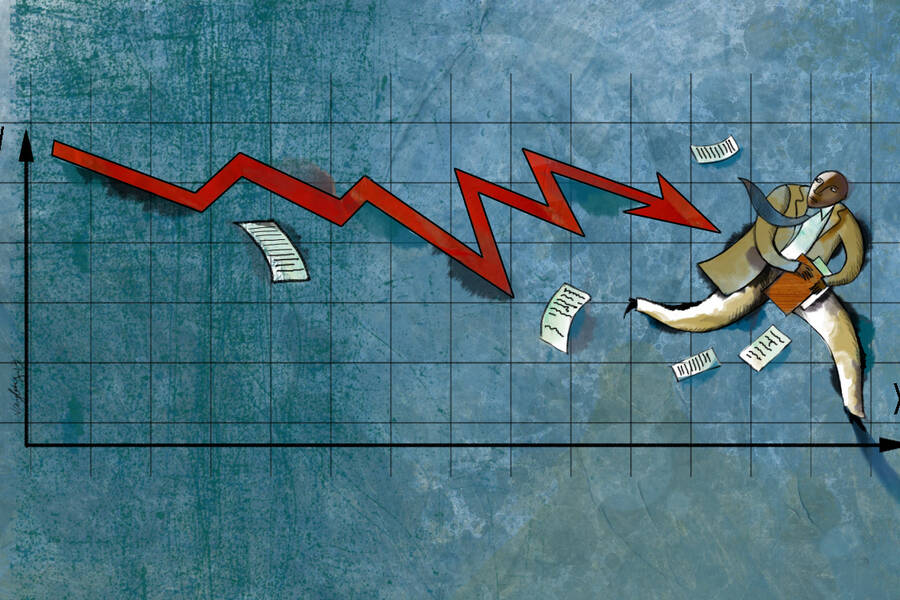
Immigration is central to the founding myth of the United States as the “land of opportunity.”
Yet throughout the nation’s history, tension between immigrants and so-called “natives”—who are almost always descendants of immigrants themselves—has existed. One especially persistent assumption is that immigration is associated with an increase in crime.
“When you look at opinion surveys, three-quarters of Americans believe that immigration increases crime,” says Jörg Spenkuch, an assistant professor of managerial economics and decision sciences at Northwestern University’s Kellogg School of Management. In a recent paper, Spenkuch investigated the validity of this assumption. “It’s an empirical question,” Spenkuch says. “I wanted to know whether crime rates go up when immigrants come into the country—plain and simple.”
He found that, contrary to the assumptions of many Americans, the answer was a clear “no” for violent crime. He did, however, note that a small uptick in property crimes could be associated with increased immigration.
A More Complete Analysis
Spenkuch is not the first to look at the issue. But previous studies that attempted to find a link between immigration and crime relied on U.S. Census self-reports from incarcerated individuals in the 1980s. If immigrant criminals are overrepresented in the U.S. prison population, the thinking was, there must be a correlation between immigration and criminal behavior. “But there’s a huge problem with that: the census is not representative of the incarcerated,” Spenkuch says. Most people in jail simply do not respond to census surveys, he explains, “and even if they do, you’d think that someone who’s at risk of being deported is not likely to tell the government that they’re an immigrant. So it’s not a good sample.”
“There’s essentially no correlation between immigrants and violent crime.”
Spenkuch assembled more-accurate data by comparing two sets of records from 1980 to 2000: nationwide crime statistics from the FBI’s Uniform Crime Reporting program; and local records from every county in the continental U.S., which listed the percentage of local residents who were immigrants. “From the 1980s onward, the data is really good,” Spenkuch says. “So I thought, let’s get a sample that’s nationally representative by including all these reports for the entire U.S.”
The results of his analysis are clear: “There’s essentially no correlation between immigrants and violent crime,” he asserts. Given some media depictions of immigrants as violent, or associated with human trafficking and the drug trade, this finding may come as a surprise to many, says Spenkuch. “There’s a long perception that immigration increases crime, and when you look at neighborhoods where lots of immigrants live, these are typically not the best neighborhoods. These are violent places. So there’s this anecdotal association [between immigrants and violent crime] that just doesn’t turn out to be true in the data.”
But Spenkuch did discover a modest positive correlation between immigration and property crime, although this effect is only present with regard to “immigrants with the poorest labor market outcome,” he says, such as those from Mexico. An increase in immigrants with better economic prospects, such as those from Canada, is not associated with any increase in property crime.
Not So Simple
That said, adds Spenkuch, “this effect is statistically detectable but not terribly large.” He estimated that a 10% increase in the number of immigrants with poorer labor outcomes would accompany a 1 to 1.2% increase in property crime rates. But accurately counting immigrants is notoriously difficult—an important limitation of the paper according to Spenkuch. “I can only look at who self-identifies as an immigrant in the census, and the census probably undercounts immigrants.” Another limitation of the research, he says, is that it was “not possible” to discriminate between immigrants who entered the country legally and those who entered illegally. Therefore, his results make no distinction between the two types of immigrants.
Finally, Spenkuch asserts that his results make no claim to establishing a definitive causal link between immigration and property crimes. “The worry with any statistical approach is that immigrants settle in areas that are on the decline because housing is cheap, and that’s also where there tends to be more crime,” says Spenkuch. “There are some statistical methods that support a result showing that increased immigration causes increased property crimes,” he continues, “but they rest on an assumption that is ultimately untestable.”
Even without a causal link, Spenkuch “thought quite a bit about how to get at the mechanisms” driving his results. “We know two things from decades of research in criminology,” he says. “Males are more likely to commit crimes than females, and younger people are more likely to commit crimes than older people. Immigrants are disproportionately male and younger.”
But even so, the small relationship between immigration and property crime cannot be entirely explained by age and gender. Spenkuch’s theory rests on the economic model of crime, which states that someone is more likely to commit a crime when the benefits of the crime outweigh the benefits of obeying the law. “If you have poor labor market prospects, you have less to lose than someone else, and you’re more likely to engage in criminal activity [for financial gain],” he says.
Handling the Findings
“Ultimately if we as a society want to decide whether immigration is a good or bad idea, we have to compare costs and benefits,” Spenkuch says. He estimates that the 1.2% increase in property crimes associated with a 10% increase in immigrants would cost between $700 and $900 million annually. But to put these numbers into perspective, other economists have estimated that immigration benefits the labor market as a whole by as much as $4.7 billion per year. “These costs are almost an order of magnitude smaller than the benefits,” Spenkuch says. “Yes, the costs are real and they’re important. But the net benefits are almost surely positive, even if you account for the costs of increased property crime.”
Spenkuch offers another, blunter comparison that directly addresses some Americans’ concerns about safety and crime. “In 2007, the U.S. Department of Homeland Security spent $12 billion on border protection,” he says. If border protections were able to stabilize the number of immigrants in the country, preventing an increase of, say, 10%, “we’d have prevented $900 million worth of property crimes. Spending $12 billion to save $900 million? That’s just not cost effective,” says Spenkuch—especially when coupled with the finding that immigration is not associated with an increase in violent crimes.
Artwork by Yevgenia Nayberg
Spenkuch, Jörg. 2014. “Understanding the Impact of Immigration on Crime.” American Law and Economics Review, 16(1): 177–219.



